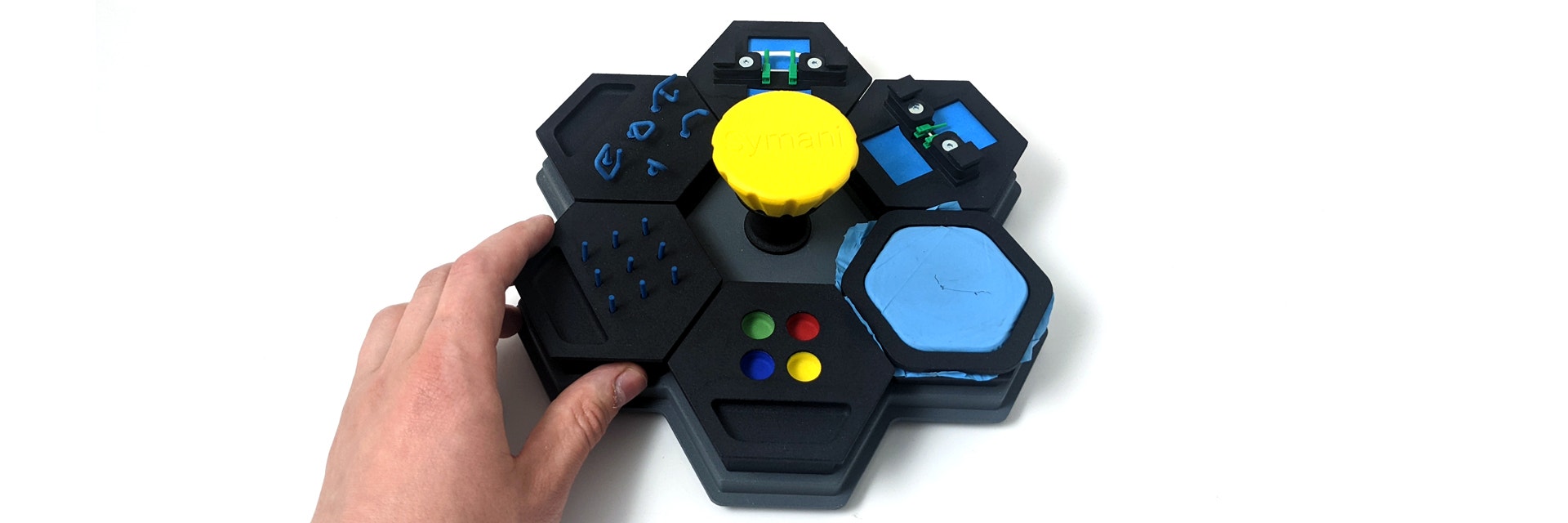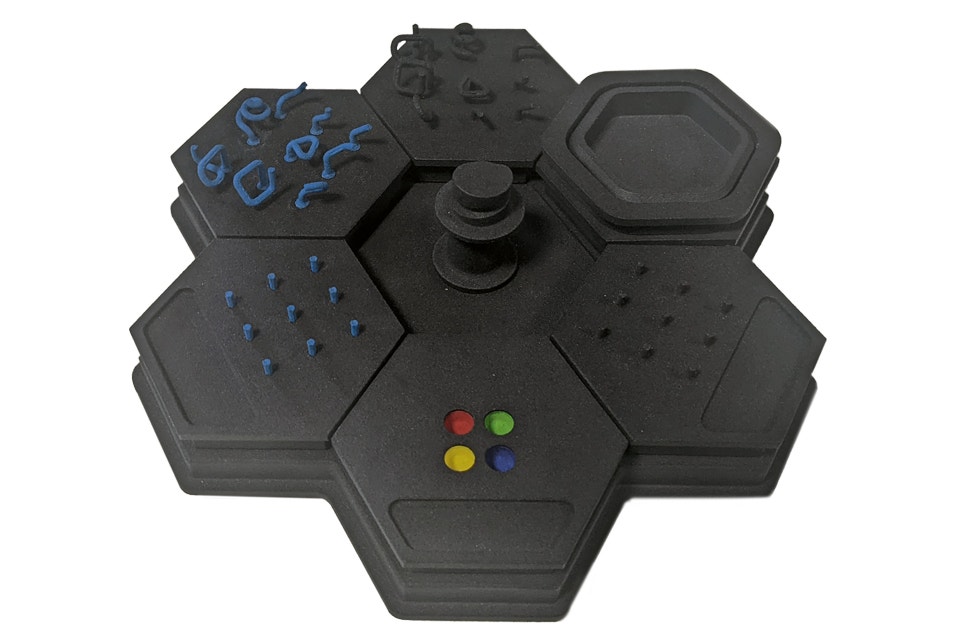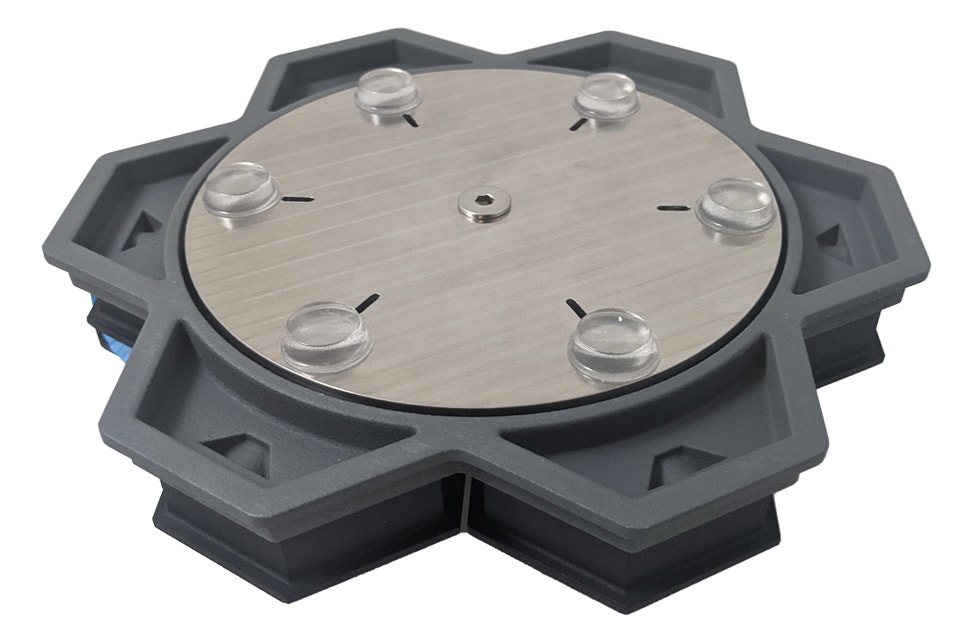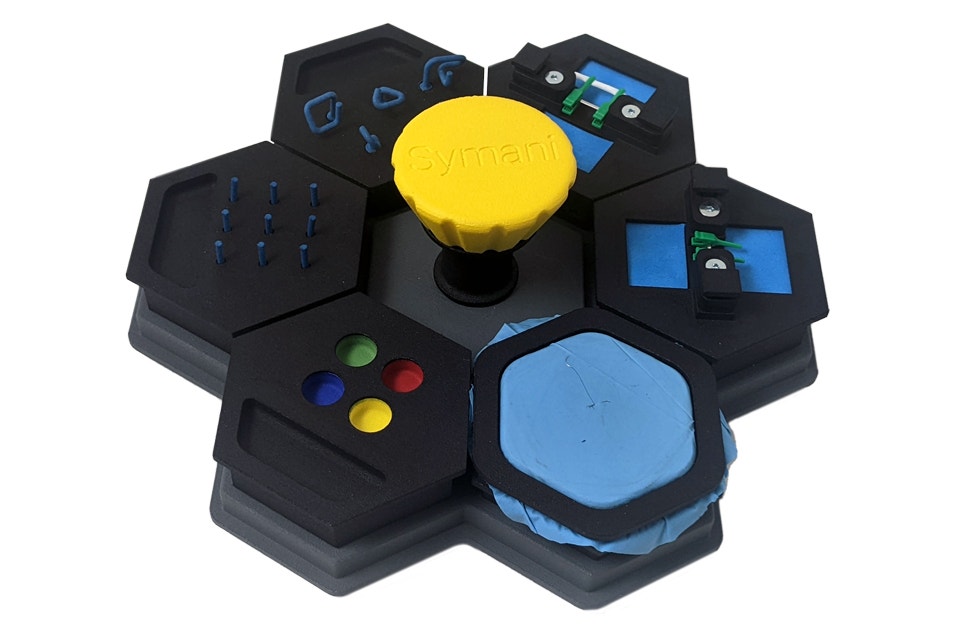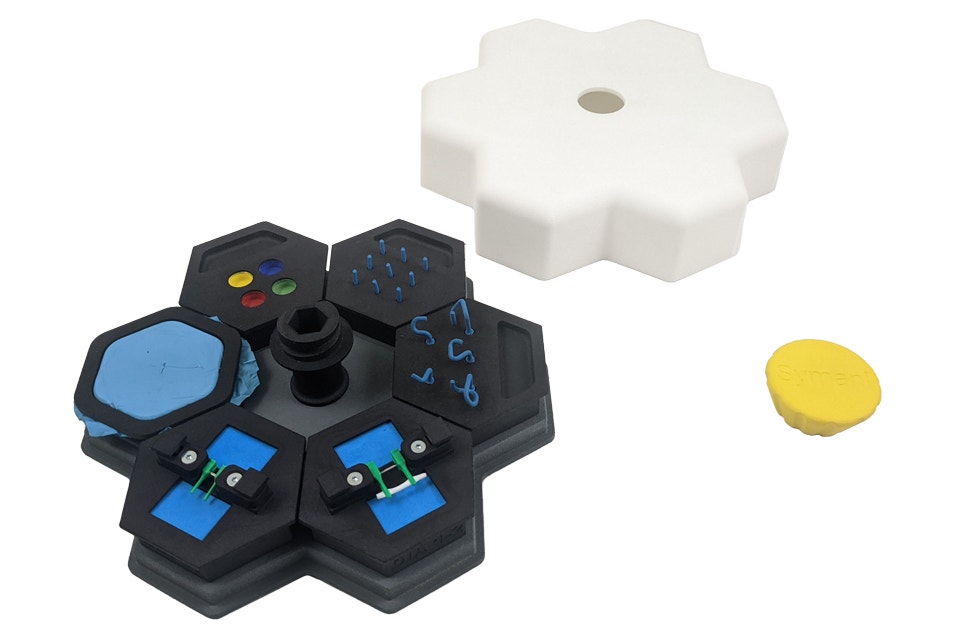CASE STUDY
MMI Uses Modular AM-Inspired Surgeon Training Board for Robotic Microsurgeries
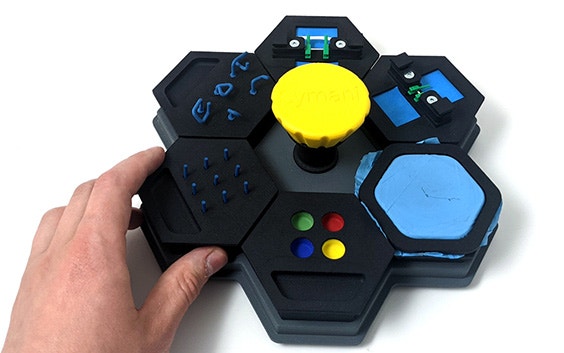
Microsurgery is a complex and delicate procedure requiring tremendous dexterity. And precision is paramount as surgeons connect sub-millimeter vessels. MMI’s Symani Surgical System uses single-use sterile instruments to allow specialists to perform such demanding procedures. However, as there’s little margin for error in an operating theater, how could MMI support surgeons in training for this robotic approach? The company turned to additive manufacturing (AM) again for the answer — transforming its static and rigid exercise board into a modular, flexible, all-in-one solution.
The challenge
Redesign exercise board used to train surgeons that perform microsurgeries
Medical Microinstruments, Inc. (MMI) specializes in building a robotic system for microsurgeries. This surgical discipline “combines magnification with advanced diploscopes, specialized precision tools, and various operating techniques.”1 The company’s Symani Surgical System — which includes ‘NanoWrist’ instruments featuring the world’s smallest robotic wrist — supports surgeons in accurately connecting small veins, arteries, or nerves within the body as carefully as possible.
However, to use these micro-instruments effectively, surgeons must familiarize themselves with the system and practice in a safe and controlled environment. In the past, MMI’s previous exercise board for surgical training consisted of large, attached squares that were static and difficult to handle. The various exercises were spread out at different heights, making it difficult to change from one activity to the next, as both the robotic arms and the microscope had to be moved each time.
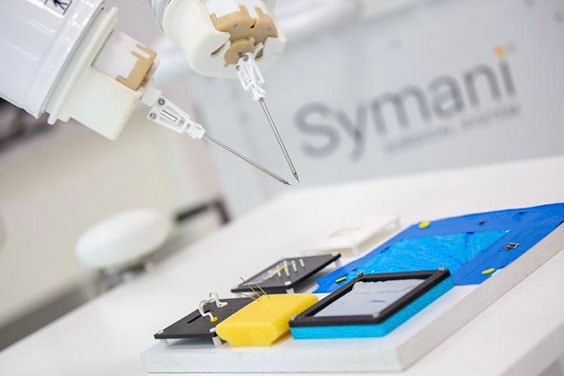
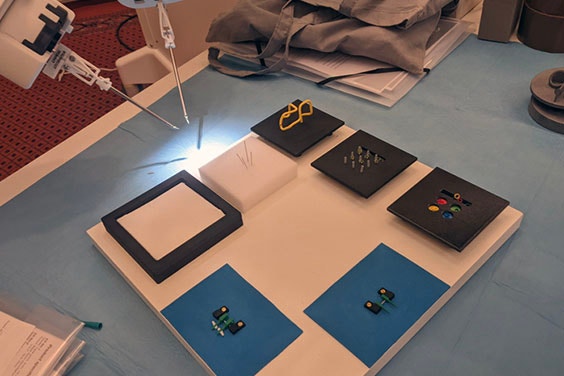
MMI's original training board used large attached squares.
“The microscope has a small field of vision, and the trainer had to make constant adjustments which interrupted the surgeon's focus. This took time to set up, breaking the immersive experience for the surgeon. Not to mention, moving the boards manually required the robotic arms to be raised or lowered in relation to the exercise boards,” says Elias Rosseau, Design Engineer at Materialise Manufacturing. “You want the surgeon to stay focused, concentrate on the exercise at hand, and not be distracted by such details.” So, how did MMI navigate this particular challenge? MMI partnered with our Design & Engineering team at Materialise Manufacturing to develop a solution that utilized 3D printing (3DP) — mainly a complete redesign of the exercise board.
The solution
Compact and modular, 3D-printed exercise board made from PA 12 and selective laser sintering technology
“The initial board was fragmented and had to be assembled by hand: MMI’s team wanted to make it more ergonomic, easier to use, and professional,” says Elias. After three months and a few iterations, including multiple feedback loops between MMI and the Manufacturing Team’s engineering department, the two teams co-created the new modular board. “It was a co-creative process that involved trying and replacing different modules until we found those pieces that worked,” says Dries Vandecruys, Engineering Services Manager at Materialise Manufacturing.
The new training board comprises six honeycomb-shaped or hexagonal modules made from PA 12 material using selective laser sintering (SLS) technology. These six pieces combine to create a gear-shaped device that’s more circular and compact in design. Although the modules are 3D printed, the board uses some traditionally manufactured parts. The base was produced using vacuum casting and mounted on a stainless steel laser-cut plate to add weight and stability to the design — with the assembly done by certified manufacturing. The team decided to use SLS, which was the most economically attractive option and allowed for small quantities and quick lead times.
The result
Ergonomic, integrated, and easy-to-use solution to help prepare surgeons for robotic microsurgeries
Thanks to 3DP, MMI created a modern, integrated solution that could be produced quickly and in small series/quantities. SLS enabled the team to create unique, complex shapes that slotted together, changing the exercise board from a stationary to a dynamic piece. The board rotates 60 degrees, allowing the surgeon to quickly try a new module. Plus, each part represents a training exercise to help surgeons familiarize themselves with the Symani Surgical System and practice essential techniques to improve positive patient outcomes when performing microsurgeries.
“Surgeons can now quickly practice skills like pick-and-place, planar suturing, and anastomoses on synthetic vessels. These exercises help surgeons prepare for the transition of their manual skills to a robotic technique during microsurgeries, as well as get to grips with depth perception while using a 3D exoscope,” states Elias. “And as the design is modular, it’s also future-proof because different training exercises can be replaced and updated when the need arises, with the modules targeting different skill levels, from beginner to more advance users.”
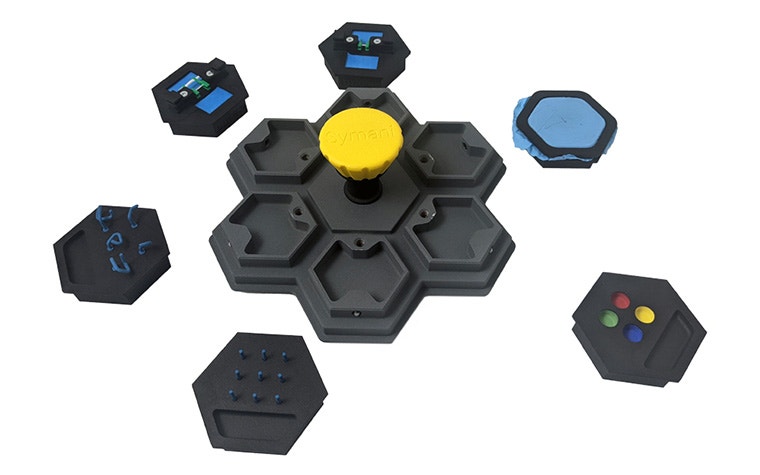
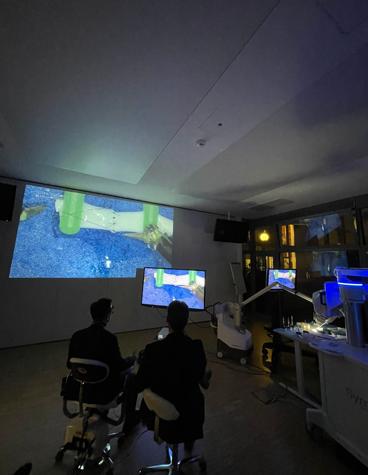
Each module can be swapped out, allowing surgeons and trainers to quickly configure the board during training exercises.
Dries notes the added value of AM, as it’s a solution that augments existing manufacturing where appropriate: “Although we use 3D-printed modules, this is a hybrid manufacturing solution in many ways because of the vacuum casting and stainless-steel components. This shows that AM provides tangible benefits, enhancing products and solutions with geometries that are impossible via other methods. AM is the perfect fit for industries like medtech because of its small series capabilities, speed, and versatility.
“The board’s streamlined design is functional and saves surgeons and trainers significant time during the setup and while practicing. It also helps surgeons train themselves using the robot — an interesting educational tool with different possibilities. However, in general, the exercise board helps MMI validate the Symani System and acts as a sort of acceptance testing device, aiding surgeons to improve their competencies simultaneously.”
Symani, or “symbiotic hand,” is MMI’s way of facilitating the seamless interaction between humans and machines to deliver high-precision surgery. AM made this vision a reality, as numerous 3D-printed components are included in the sterile accessories necessary for each procedure. Now, MMI is expediting this technology, ensuring that the onboarding process is as smooth as possible for surgeons with a 3D-printed robotic surgery training. MMI knows the benefits AM has to offer, both big and small: consider how it could revolutionize your business and connect you to new clients and opportunities today.
Share on:
This case study in a few words
- MMI
- Medtech
- Selective laser sintering
- PA 12
- Create complex, ergonomic shapes and modular designs
- Enabled an integrated all-in-one solution
- Economically viable and available even without minimum order quantities (MOQs)
